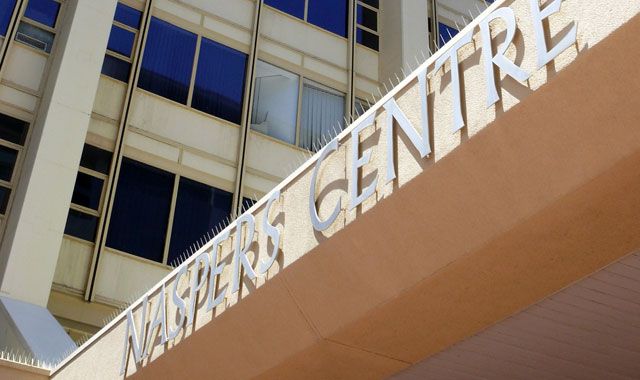
With SABMiller out of the JSE Top 40, Naspers now accounts for roughly a fifth of the index — a risk for anyone tethering their savings to the index. Naspers trades on a price-earnings multiple of about 100, which is perilously close to delusional.
If Naspers takes a dive, it brings the whole market down with it. Fund managers appear less than enthusiastic about having to load up on more Naspers at R2 344/share, which is what they will have to do if they are running tracker funds, or benchmarking their performance to the index.
Naspers increased its weighting in the Top 40 to 19,2% from 16,7% following the buyout of SABMiller by Anheuser-Busch InBev. SABMiller’s allocation in the index was distributed among the remaining shares, and made space for a new entrant — Impala Platinum.
Naspers earns more than 70% of its revenue abroad. This, and the timely investment in Chinese digital company Tencent, which has grown operating profit by a compound 33% over the last five years, has propelled the share price to its current lofty heights.
“Looking at Naspers’s weighting in the index, if you think about it, our performance is dependent on Chinese kids playing Clash of Clans,” says David Shapiro, deputy chairman of Sasfin Securities. “It’s becoming harder and harder for local managers to shine. Our choices have become severely limited.”
PSG asset manager Shaun le Roux suggests that Naspers may be a fantastic business, but it’s a poor investment at these levels.
“We think risk is about the possibility of losing money for your clients and we think we can find better opportunities for our clients than Naspers at these prices,” he says.
“We don’t believe in owning a share at any price. We look for great businesses at a good price and that has always been our philosophy. Our fund has managed to beat the index without owning any Naspers, which we believe is priced for perfection.”
Le Roux says he picked up construction and resources stocks such as Glencore and Anglo American when they were beaten up and left for dead last year. Financials have also done well this year: Standard Bank is up about 35%, Nedbank 13%, Capitec 27% and Barclays Africa 18%. These returns compare favourably with Naspers’s gain of 18% since January.
The top 10 shares in the index now account for 59% of the index weight. These shares are heavily rand-hedged, which makes them vulnerable to currency movements. Expect volatile times ahead. Naspers’s out-sized weighting in the index illustrates how lop-sided the market has become. The top 20 shares make up 75% of the market cap.
The hammering of the British pound by the Brexit vote has hit shares such as British American Tobacco, AB Inbev, Mediclinic, Mondi, Bidcorp, Intu Properties and Capital & Counties. These are all large-cap shares with big weightings in the index.

“The gold price, platinum price and oil price have no relevance any more — not that I care. They’re dependent on the Chinese economy, which looks like it’s steadying, but I hardly think we’re going to see any major shift in demand from them,” says Shapiro.
Andrew Dittberner, chief investment officer at Cannon Asset Managers, says fund managers will breathe a sigh of relief at the exit of SABMiller from the index, but tracker funds will remain predominantly invested in the top 20 shares due to their heavy weighting in the index. Industrials now constitute 63% of the index, while resources and financials constitute 19,3% and 17,8% respectively. “If investment management is about beating a benchmark such as the JSE All Share Index or the Top 40 Index, then active managers’ jobs have just got a little tougher,” says Dittberner.
Shapiro says the only way for fund managers to perform is to look for turnaround stocks in smaller and medium-cap stocks. “But it’s a dangerous game to play with other people’s money.”
Shares such as MTN, PPC, ArcelorMittal South Africa, Murray & Roberts and Aveng are ones to watch for a turnaround.
If Naspers’s dominance of the index is a risk factor, it may be time to take a defensive posture. Stephen Meintjes, director at Momentum SP Reid Securities, notes that there is a lack of ebullience in the local market “due mainly to well-known local issues”.
“This raises the question as to whether defensiveness is appropriate and, if so, what constitutes a defensive stance. Certainly sitting with all one’s eggs in the currency of the country, possibly about to be devalued, doesn’t qualify (as defensive). Equities with internationally diversified sources of income, yield and growth potential could well be qualified.”
At other times, these same companies might have been perceived as high-risk growth stocks. Many active fund managers will be happy to leave the index heavyweights Naspers, Richemont, BHP Billiton and BAT on the sidelines while there are good turnaround stories going begging.
- This article was originally published on Moneyweb and is used here with permission




